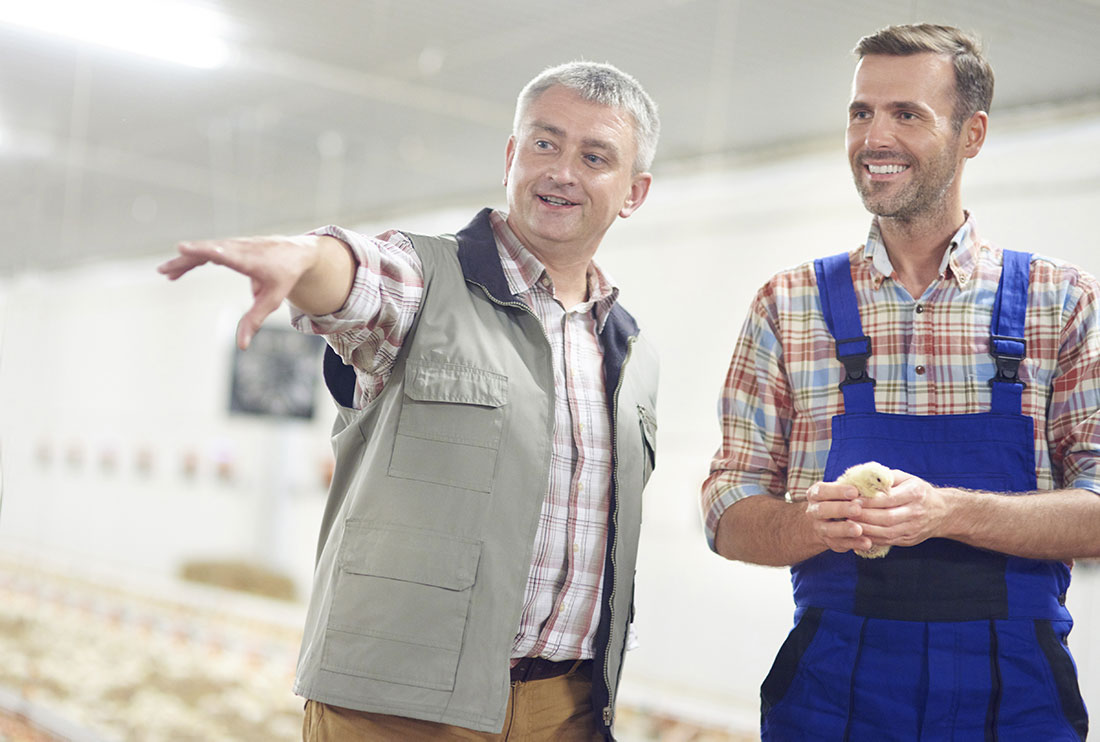Section 3 | Reduction
Page 08 /
Key Aspects of Animal Husbandry
Animal Husbandry
What is Animal Husbandry?
Animal husbandry is the day-to-day care, selective breeding, and raising of livestock. It is an essential component to reducing the number of antimicrobials that are used. The following are some of the most important areas of animal husbandry that can lead to a reduction in the level of disease, and ultimately the quantity of antimicrobials used in livestock:
Stocking Density
Stocking density is the space allowance, usually measured in square feet, per animal unit. For example, in the Code of Practice for the Care and Handling of Dairy Cattle, it recommends that cows on a bedded pack have 120 square feet per cow.

Stocking density has been shown to have a significant impact on disease levels, productivity, and animal welfare.
Overcrowding leads to:
- An increased transmission of disease, as more animals are sharing the same airspace
- Poorer air quality, as the ventilation system may not be able to handle the higher volume of ammonia (recall that more animals per square foot = more manure per square foot)
- A higher level of stress as the animals try to find a comfortable and dry resting area, go to the feed bunk, or drink water
- This stress can contribute to a greater susceptibility to disease due to a weaker immune system
As an example, when pigs are overcrowded they are at a greater risk to develop pneumonia, and will also have a reduced growth rate.
Thus, it is important to ensure the appropriate stocking density is used to minimize disease and reduce antimicrobials being used. To determine what the best stocking density is for your barn, find the Code of Practice for the livestock species you work with here and discuss with your veterinarians and other farm advisors.
Ventilation
Proper ventilation is critical to achieving optimal productivity and reducing disease levels. Livestock produce heat, manure, and urine which adds moisture and toxic gases (such as ammonia) that can have adverse effects on health, leading to disease (e.g. pneumonia).

To prevent respiratory disease it is critical to ensure that there are ample air exchanges per hour, such that all stale air with excess moisture and toxic gas is replaced with fresh air. When the weather is hot, ventilation is also important to provide a comfortable environment and prevent heat stress.
There are many different systems that can be used to achieve good ventilation, such as natural or mechanical ventilation, but the ideal system is dependent on the livestock species and barn design. A ventilation manual created by OMAFRA, along with consultation with ventilation experts, can help guide the development of a ventilation system for your barn.
Nutrition
Improper animal nutrition (imbalanced diet, over- or under-feeding) can cause disease in livestock, or make them more susceptible to developing disease.
For example, under-feeding dairy calves can lead to a higher susceptibility to developing pneumonia and diarrhea, as well as a greater risk of being treated with an antimicrobial.

Furthermore, if an animal is malnourished, medicines provided will be less effective or not effective at all. Water access and quality is another consideration when evaluating nutrition.
Proper nutrition will help to reduce the level of disease and can lead to a higher level of productivity. Work with a nutritionist to develop a feeding and nutrition program that meets the needs of the livestock species that you work with.
Disease Detection
Identifying and treating animals that are early in the course of disease will help to improve disease recovery and could lead to a reduced need to retreat animals.
Specific signs of illness could include:
- Loss of appetite
- Abnormal behaviour
- Production loss
- Slower rate of gain
- Lower milk production
- Weight loss

It is important to work with your veterinarian to develop a protocol for early disease identification, and to ensure it is created with the livestock species and housing in mind.